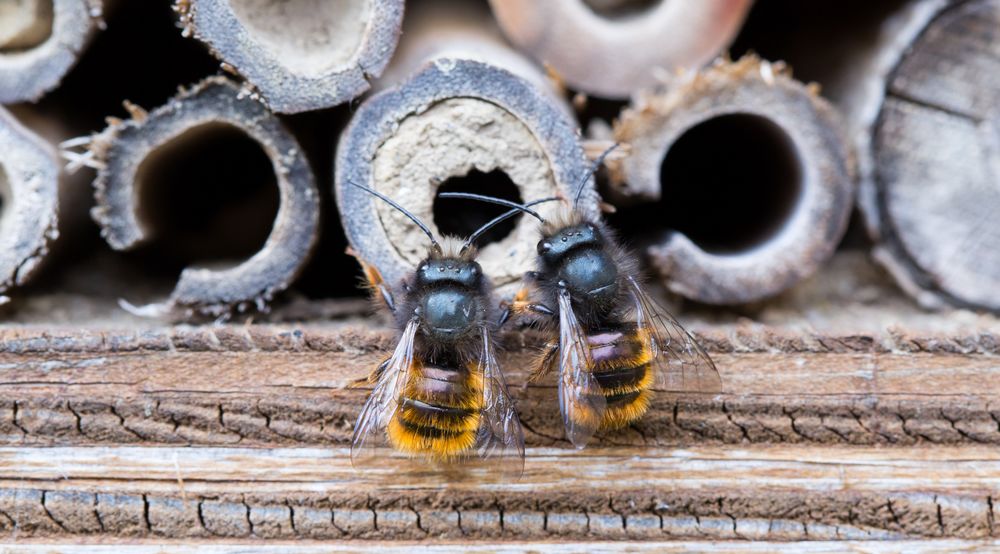6 ways landscapers can attract pollinating insects
From dry stone walls to a host of other possibilities, Paysalia reviews the ecological solutions creating a buzz.

Bees, butterflies, coleopters, beetles and other insects are essential for biodiversity. However, in recent years their populations have shrunk significantly. It is vital to encourage them to return to parks, gardens and green spaces but how can we attract pollinating insects? From dry stone walls to a host of other possibilities, Paysalia reviews the ecological solutions creating a buzz.

1. Plant more nectar-bearing species
Rich in nectar, pollen or honeydew, flowering plants nourish pollinating insects. In France alone, there is a choice of over 450 nectar-bearing plants making it possible to vary plant species in green spaces. For everyone interested in how to attract more insects, the French Ministry for Agriculture has published a list of the 200 plants bees find the most attractive!
2. Other management methods
As pesticides are now prohibited in France and other countries, gardeners, landscape designers and local authorities have to find more ecological green space maintenance solutions. These include leaving some spaces waste as habitats for insects, creating hedges, thickets and ponds, prioritizing mixed plantations and finally, mowing less often … in fact, everything possible to preserve insects’ natural shelters.
Urban green space maintenance without pesticides
3. Build dry stone walls
Dry stone walls are an age-old building technique without mortar or binders – just fitting stones together to create retaining or decorative walls containing 15 to 20% of air. These ideal natural niches for biodiversity were addressed in a conference at Paysalia 2021. Another interesting alternative is aromatic dry stone insect spirals used as supports for nectar plants.
4. Recycle dead trees
Too often, dead or sick trees are simply felled. But they can continue to play a part in biodiversity! Dead and sick trees can be shaped into shelters for insects and the ecosystem in their roots preserved. There is a host of ways to recycle trees listed in a guide published by Plante & Cité.
5. Eliminate pollinating insect predators
The second worst enemy of bees is the Asian hornet (the first is neonicotinoids). Ten hornets can destroy a hive… To limit this devastation, install hornet traps from March to May to kill their queens fertilized at the end of hibernation. Another tactic: the predator of the predator is our friend! Installing bird nesting boxes is a simple and effective technique to frighten off the predators that feed on pollinating insects.
How to bring birds back to city centers
6. Build insect hotels and shelters
Less known than domesticated bees, there are over 1,000 species of wild bees. They do not produce honey but are champion pollinators. They don’t need hives – just log shelters, hollow stems or protected holes in clay grounds. Another idea very popular with the general public is to build insect hotels. But be careful: to attract insects, they must respect some rules. Pick the materials carefully and turn the hotels towards the sun and out of dominant winds.
Why pollinating insects are essential
Most plant species needs insects to reproduce. 80% of crops in the world need to be pollinated by insects (1). But pollution, global warming, the urbanization of natural environments and the introduction of competitive exotic species have all led to the decline of pollinating insects. Today it is estimated that over 40% of insect species are likely to become extinct (2).
Paysalia, the benchmark landscape trade show, is committed to fighting the disappearance of insects and preserving biodiversity. Paysalia 2021’s Biodiversity & Environment Village was a place where landscaping professionals could chat with experts to find out more about what they could personally do to meet these challenges. All year long, we publish ideas on how to add more life to your green spaces!
Follow us on Social Media
(1) INRA: À quoi servent les abeilles ?
(2) ScienceDirect: Worldwide decline of the entomofauna: A review of its drivers
© Photo credit: fcerez / Pawel Kadysz

